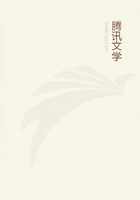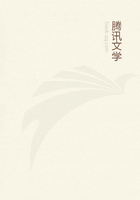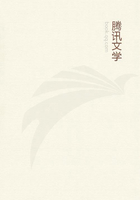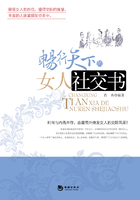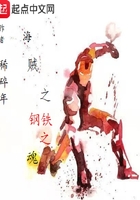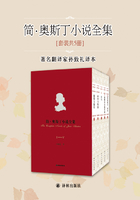Thus an immense block, which the Romans called ~iusula~, or island, of bourgeois houses, flanked on the right and the left by two blocks of palaces, crowned, the one by the Louvre, the other by the Tournelles, bordered on the north by a long girdle of abbeys and cultivated enclosures, all amalgamated and melted together in one view; upon these thousands of edifices, whose tiled and slated roofs outlined upon each other so many fantastic chains, the bell towers, tattooed, fluted, and ornamented with twisted bands, of the four and forty churches on the right bank; myriads of cross streets; for boundary on one side, an enclosure of lofty walls with square towers (that of the University had round towers); on the other, the Seine, cut by bridges, and bearing on its bosom a multitude of boats;behold the Town of Paris in the fifteenth century.
Beyond the walls, several suburban villages pressed close about the gates, but less numerous and more scattered than those of the University. Behind the Bastille there were twenty hovels clustered round the curious sculptures of the Croix-Faubin and the flying buttresses of the Abbey of Saint-Antoine des Champs; then Popincourt, lost amid wheat fields;then la Courtille, a merry village of wine-shops; the hamlet of Saint-Laurent with its church whose bell tower, from afar, seemed to add itself to the pointed towers of the Porte Saint-Martin; the Faubourg Saint-Denis, with the vast enclosure of Saint-Ladre; beyond the Montmartre Gate, the Grange-Batelière, encircled with white walls; behind it, with its chalky slopes, Montmartre, which had then almost as many churches as windmills, and which has kept only the windmills, for society no longer demands anything but bread for the body. Lastly, beyond the Louvre, the Faubourg Saint-Honoré, already considerable at that time, could be seen stretching away into the fields, and Petit-Bretagne gleaming green, and the Marché aux Pourceaux spreading abroad, in whose centre swelled the horrible apparatus used for boiling counterfeiters. Between la Courtille and Saint-Laurent, your eye had already noticed, on the summit of an eminence crouching amid desert plains, a sort of edifice which resembled from a distance a ruined colonnade, mounted upon a basement with its foundation laid bare. This was neither a Parthenon, nor a temple of the Olympian Jupiter. It was Montfau?on.
Now, if the enumeration of so many edifices, summary as we have endeavored to make it, has not shattered in the reader's mind the general image of old Paris, as we have constructed it, we will recapitulate it in a few words. In the centre, the island of the City, resembling as to form an enormous tortoise, and throwing out its bridges with tiles for scales; like legs from beneath its gray shell of roofs. On the left, the monolithic trapezium, firm, dense, bristling, of the University; on the right, the vast semicircle of the Town, much more intermixed with gardens and monuments. The three blocks, city, university, and town, marbled with innumerable streets. Across all, the Seine, "foster-mother Seine,"as says Father Du Breul, blocked with islands, bridges, and boats. All about an immense plain, patched with a thousand sorts of cultivated plots, sown with fine villages. On the left, Issy, Vanvres, Vaugirarde, Montrouge, Gentilly, with its round tower and its square tower, etc.; on the right, twenty others, from Conflans to Ville-l'Evêque. On the horizon, a border of hills arranged in a circle like the rim of the basin. Finally, far away to the east, Vincennes, and its seven quadrangular towers to the south, Bicêtre and its pointed turrets; to the north, Saint-Denis and its spire; to the west, Saint Cloud and its donjon keep. Such was the Paris which the ravens, who lived in 1482, beheld from the summits of the towers of Notre-Dame.
Nevertheless, Voltaire said of this city, that "before Louis XIV., it possessed but four fine monuments": the dome of the Sorbonne, the Val-de-Grace, the modern Louvre, and Iknow not what the fourth was--the Luxembourg, perhaps.
Fortunately, Voltaire was the author of "Candide" in spite of this, and in spite of this, he is, among all the men who have followed each other in the long series of humanity, the one who has best possessed the diabolical laugh. Moreover, this proves that one can be a fine genius, and yet understand nothing of an art to which one does not belong. Did not Moliere imagine that he was doing Raphael and Michael-Angelo a very great honor, by calling them "those Mignards of their age?"Let us return to Paris and to the fifteenth century.
It was not then merely a handsome city; it was a homogeneous city, an architectural and historical product of the Middle Ages, a chronicle in stone. It was a city formed of two layers only; the Romanesque layer and the Gothic layer;for the Roman layer had disappeared long before, with the exception of the Hot Baths of Julian, where it still pierced through the thick crust of the Middle Ages. As for the Celtic layer, no specimens were any longer to be found, even when sinking wells.
Fifty years later, when the Renaissance began to mingle with this unity which was so severe and yet so varied, the dazzling luxury of its fantasies and systems, its debasements of Roman round arches, Greek columns, and Gothic bases, its sculpture which was so tender and so ideal, its peculiar taste for arabesques and acanthus leaves, its architectural paganism, contemporary with Luther, Paris, was perhaps, still more beautiful, although less harmonious to the eye, and to the thought.
But this splendid moment lasted only for a short time; the Renaissance was not impartial; it did not content itself with building, it wished to destroy; it is true that it required the room. Thus Gothic Paris was complete only for a moment. Saint-Jacques de la Boucherie had barely been completed when the demolition of the old Louvre was begun.
After that, the great city became more disfigured every day.

